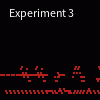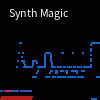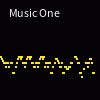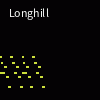Hi there,
I am quite new to this community, so before I get into depth about my question, I'll quickly introduce myself. I have very limited musical training, though I have been slowly teaching myself what works and what doesn't by using this website and a Roland JUNO-DI synth. Compared to my many of my peers, I have quite radical musical interests (e.g. synthwave). When experimenting, I have found it difficult to construct the type of music I enjoy listening. I also have a very hard time transcribing music, so writing something that sounds good to my ears can often be quite troublesome. On my synthesizer, however, I find it much easier to create music that I like better.
This brings me to my question: what are some of the most effective practices that you or others have employed to help write a melody? I know as a first step I should learn the common chords and examine other's music, but any further advice would be well appreciated.
Thanks,
-Will
P.S. I have been able to write a couple of decent songs like the following:
--- Google Drive folder of my best sounding "songs" that I have recorded elsewhere (not the clearest sounding music, btw; highlights of this playlist include "Desolation," "When the Sun Fell Upon Us," and "Taking Cover in an Ice Cave")
--- (MP3 conversion found in external audio-library linked above; "Experiment 3")
(MP3 conversion found in external audio-library linked above; "Experiment 3")
--- (probably my most melodic, yet it is definitely not the genre of music I like; I made this by accident)
(probably my most melodic, yet it is definitely not the genre of music I like; I made this by accident)
--- (needs work)
(needs work)
--- (needs more development)
(needs more development)
I am quite new to this community, so before I get into depth about my question, I'll quickly introduce myself. I have very limited musical training, though I have been slowly teaching myself what works and what doesn't by using this website and a Roland JUNO-DI synth. Compared to my many of my peers, I have quite radical musical interests (e.g. synthwave). When experimenting, I have found it difficult to construct the type of music I enjoy listening. I also have a very hard time transcribing music, so writing something that sounds good to my ears can often be quite troublesome. On my synthesizer, however, I find it much easier to create music that I like better.
This brings me to my question: what are some of the most effective practices that you or others have employed to help write a melody? I know as a first step I should learn the common chords and examine other's music, but any further advice would be well appreciated.
Thanks,
-Will
P.S. I have been able to write a couple of decent songs like the following:
--- Google Drive folder of my best sounding "songs" that I have recorded elsewhere (not the clearest sounding music, btw; highlights of this playlist include "Desolation," "When the Sun Fell Upon Us," and "Taking Cover in an Ice Cave")
---
---
---
---


![[Image: Mat-WCQNational-Dracossack.png?1406083952]](http://client-cdn.crystalcommerce.com/photo/coretcg/file/208013/large/Mat-WCQNational-Dracossack.png?1406083952)

 x1
x1